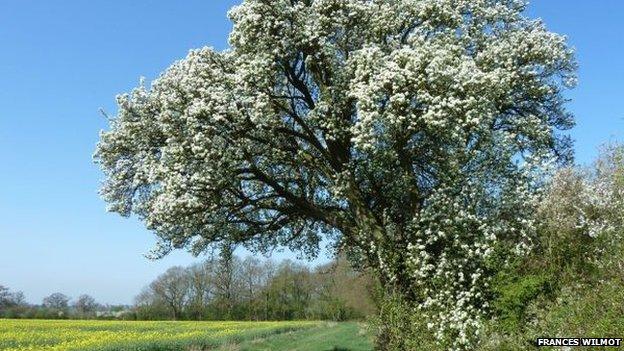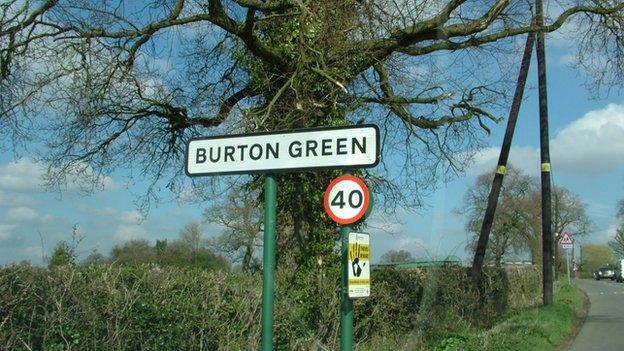DNA taken of ancient HS2 route tree
- Published

The tree is one of the oldest in Britain, according to experts
An ancient pear tree which could be felled under plans for a high-speed rail link between London and Birmingham is to have its DNA collected.
The tree, near the village of Cubbington, in Warwickshire, is one of the oldest in Britain, according to experts.
HS2 Ltd said it planned to take cuttings from the tree which would be replanted in the local area.
Villagers said they would campaign for a tunnel to run under the tree.
'Ancient woodland'
Peter Delow from Cubbington Parish Council said: "What HS2 is proposing is that the tree will be cut down but, before that, they will take seeds and grafts to preserve its DNA.
"They originally planned to dig it up and relocate it but it's a 200-year-old tree and they decided the chances of success were too small to warrant the expenditure.
"We believe it is the second oldest pear tree in Britain."
Mr Delow added the village, near Leamington Spa, would continue to press MPs to change the HS2 proposals so the route tunnelled beneath the tree and the surrounding woodland.
"It's an area of ancient woodland and we have proposed tunnelling underneath the trees so it won't damage them," he said.
David Alderman, director of the Tree Register, a record of tree information, said it is the largest wild pear recorded in Britain and "certainly appears to have ancient origins".
Ben Ruse, lead spokesperson for HS2, said: "We recognise the significance of the tree and will do all we can to ensure wild pear trees continue to be a feature of the countryside around Cubbington.
"Because the hollow lower trunk makes it impractical to move the tree, we instead plan to propagate the cuttings, collect seeds and replant the young trees in the surrounding area.
"The felled tree will be moved to a newly-created woodland next to South Cubbington Wood."
- Published12 February 2014
- Published10 April 2014
